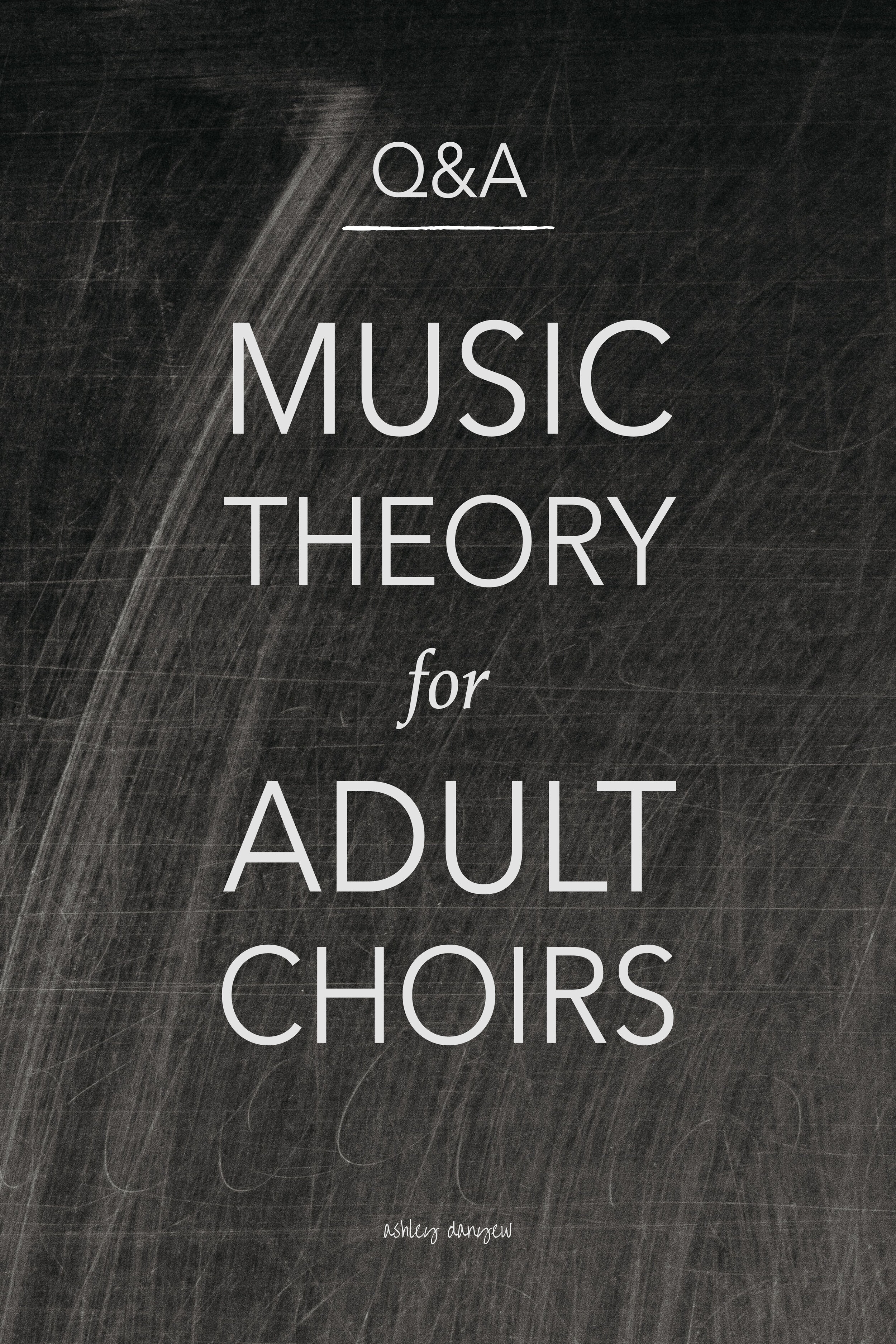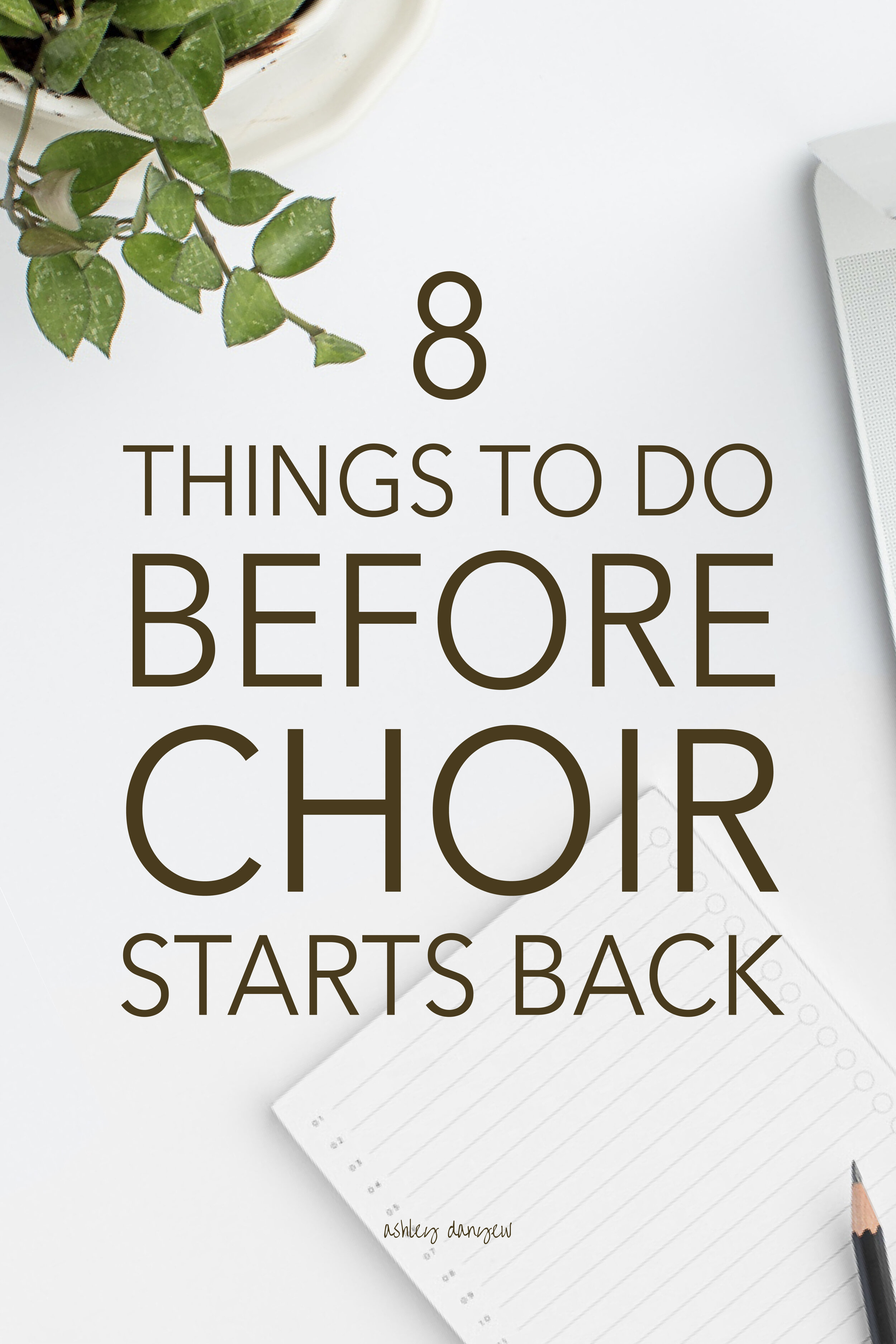“How do I teach this anthem to my choir?”
It's a question we've all asked ourselves at one point or another. And truth be told, the rehearsal process for a church choir can be a bit ambiguous. It's sort of like working with a school choir, except they're volunteer adults and you probably have a mix of ages and levels (some might not even read music).
Oh, and you need to have something ready to sing every Sunday.
What's a choir director to do? How can you teach something effectively and meaningfully in a short amount of time?
My secret weapon? Start early.
I recommend giving yourself plenty of time to introduce, rehearse, and polish an anthem before singing it in worship, so introduce it at least four weeks in advance.
Spend several weeks working on an anthem in rehearsal - not because it takes the choir a month to learn something new but because it allows you to focus on different elements each week. You'll notice below that my process for rehearsing the anthem is different each week. This keeps your rehearsals varied and interesting — working on several different anthems (in different stages) in rotation each week.
There's also something to be said for living with a piece of music for a while; living with the text, the melodies, the meaning behind it. Rather than simply reading the notes and words on the page, I think singing something for several weeks helps you internalize it better and sing from the heart.
Your process might look different than mine and that's okay! There's more than one way to rehearse a new anthem — this is a glimpse into my process and what’s worked for me in the past.
Free Resource
Rehearsal-planning made easy.
Plan your weekly (90-minute) choir rehearsal in no time with this helpful printable! Print, fill in your rehearsal items (warm-ups, music for Sunday, anthems, etc.) and you're good to go!
Study the Score
I start by spending some time studying the new anthem on my own — playing, singing, and studying the score. I usually work through the following checklist:
Look for big sections
Look for repeated material (and places that are similar but different)
Mark places to breathe (and places to carry over)
Think about text, pronunciation, challenging words/vowels and how to teach this
Play through choral parts and accompaniment (I might also try some combination of both)
Practice singing and playing different phrases or sections
Anticipate challenges and choir's first instincts
Once I'm familiar with the anthem, I am ready to introduce it to the choir.
Here’s an example of how I rehearse and prepare a new anthem in four weeks:
Week 1
Step 1: Introduce the piece
Talk about why I chose it, how it will connect with the service, the significance of the text, and anything they need to know before singing through it (turn-backs, surprising divisi, pronunciation, etc.). I've found this helps generate excitement, create meaning, and promote buy-in.
Step 2: Sightread
This is an opportunity to see the whole piece at-a-glance — an important step in the learning process. It also gives me a chance to evaluate how much time we'll need to spend preparing it. I usually have the choir sing through the whole piece (or at least most of it) this first week. I might also play a recording for them to listen to.
Week 2
Step 3: Review opening section
It's always good to start with something familiar. I usually start by having the choir sing through the opening section of the piece together to refresh everyone's memory. We break into parts, review, and put back together.
Step 4: Add details
Next, I talk about dynamics, phrasing, breaths, vowels/consonants, etc., drawing their attention to things in the score. This is a great opportunity to introduce new concepts and explain new musical signs and symbols. Once we've discussed things for a few minutes, I have the choir sing through the piece again with these details in mind.
Step 5: Review second section
I usually like to move on to the second section in this rehearsal, as well. I repeat Steps 3 and 4, but usually don't spend quite as much time as we did on the first section.
Step 6: Look ahead
To finish, I have the choir thumb through the next few pages as I talk about the closing section(s). I try to point out any similarities or differences, to give them a heads up for next time.
Week 3
Step 7: Start with the most challenging section
In contrast to the way I start rehearsal in Week 2, I tend to jump right to the most challenging section in Week 3. We break things apart, do some section work, and put it all back together again.
Step 8: Review what we worked on last week
I like to ask my choir members to recall the things we talked about in last week's rehearsal (rather than reviewing everything for them). I find this is a great way to see what they remember(!) and help them take ownership of the process. We generally talk about dynamics, phrasing, breaths, vowels/consonants, etc. I may also discuss the meaning of the text again and why it's significant.
Step 9: Put back in context
This is so important. I try to make sure I save at least a few minutes at the end of rehearsing a piece to put sections back in context. I also try to review transitions and tricky page-turns so there are no surprises.
Week 4
Step 10: Review what we worked on last week
Again, in contrast to the ways I begin rehearsal in Weeks 2 and 3, this week, I often begin by asking choir members to review what we worked on last time. What do they remember? Talking through these reminders before singing through the piece often saves time and frustration by not having to stop and fix things we worked on previously.
Step 11: Practice running the piece without stopping
Once we've reviewed our notes from last week as a group, I have them stand and we sing through the piece straight through, without stopping. This is important because, as musicians, we need to practice what it will be like to perform a piece — singing or playing straight through, without pausing or fixing things along the way.
Step 12: Evaluate
Again, I like to ask my choir members to evaluate themselves. What do they think went well? What do they think could be improved in the future? What was challenging? What were they proud of? This kind of active listening and reflection is an important part of learning and developing musicianship. After hearing from a few people, I share any additional thoughts that may be helpful for Sunday. Depending on how the run-through went and if there's any time left, we might run the anthem once more.
And there you have it — my 4-week process for rehearsing a new anthem.
Depending on the anthem and time of year, this process may change a bit. Sometimes, you can spend up to six weeks preparing a new anthem; others that are more familiar may only take 2-3 weeks to prepare.
I like to have a mix of old and new, familiar and unfamiliar, traditional and more modern, and simple and challenging pieces in the folder at any given time, so it's important to recognize that the rehearsal process may vary from anthem to anthem. However, the basic elements stay the same:
The teaching structure is whole-part-whole, meaning we start with an introduction to the whole piece, break it into parts in subsequent weeks, and finish by putting everything back together.
The rehearsal process includes only a few steps each week, meaning we don't spend an entire rehearsal preparing one anthem. I generally devote 10-15 minutes per anthem each week — that's it! This usually gives us enough time to review what we worked on previously, tackle a new section, and put it together. It also keeps rehearsal moving along and helps everyone stay engaged in what we're doing.
Each week is different, meaning we don't rehearse the anthem the same way every week. Some weeks, we start with a familiar section; some weeks, we start at the end and work backwards; some weeks, we start by talking through the piece and reminding ourselves (and others) what to focus on when we sing.
I also move anthems around from week to week, based on the work we need to do. I tend to start and end with something more familiar and put the most challenging anthem toward the beginning, so we can do our hardest work while everyone is mentally sharp, engaged, and in good voice.
Develop the skills you need to lead and teach with confidence.
Join me inside Music Education and Leadership Skills for the Adult Choir Director, an online mini course for church musicians.
Packed with practical tools, resources, and strategies you can use right away, you’ll learn the basics of how adults learn, how to teach vocal technique and choral methods, develop sight-reading skills, choose music, and plan rehearsals.
I’d love to hear your thoughts:
What does your rehearsal process look like? Any tips to share?
Read more:
10 Secrets for Running a Successful Choir Rehearsal
How to Plan a Productive Choir Rehearsal
6 Tips for Having Effective Choir Practices
Choir Rehearsal Game Plan
7 Tips for a More Productive Choir Rehearsal








































